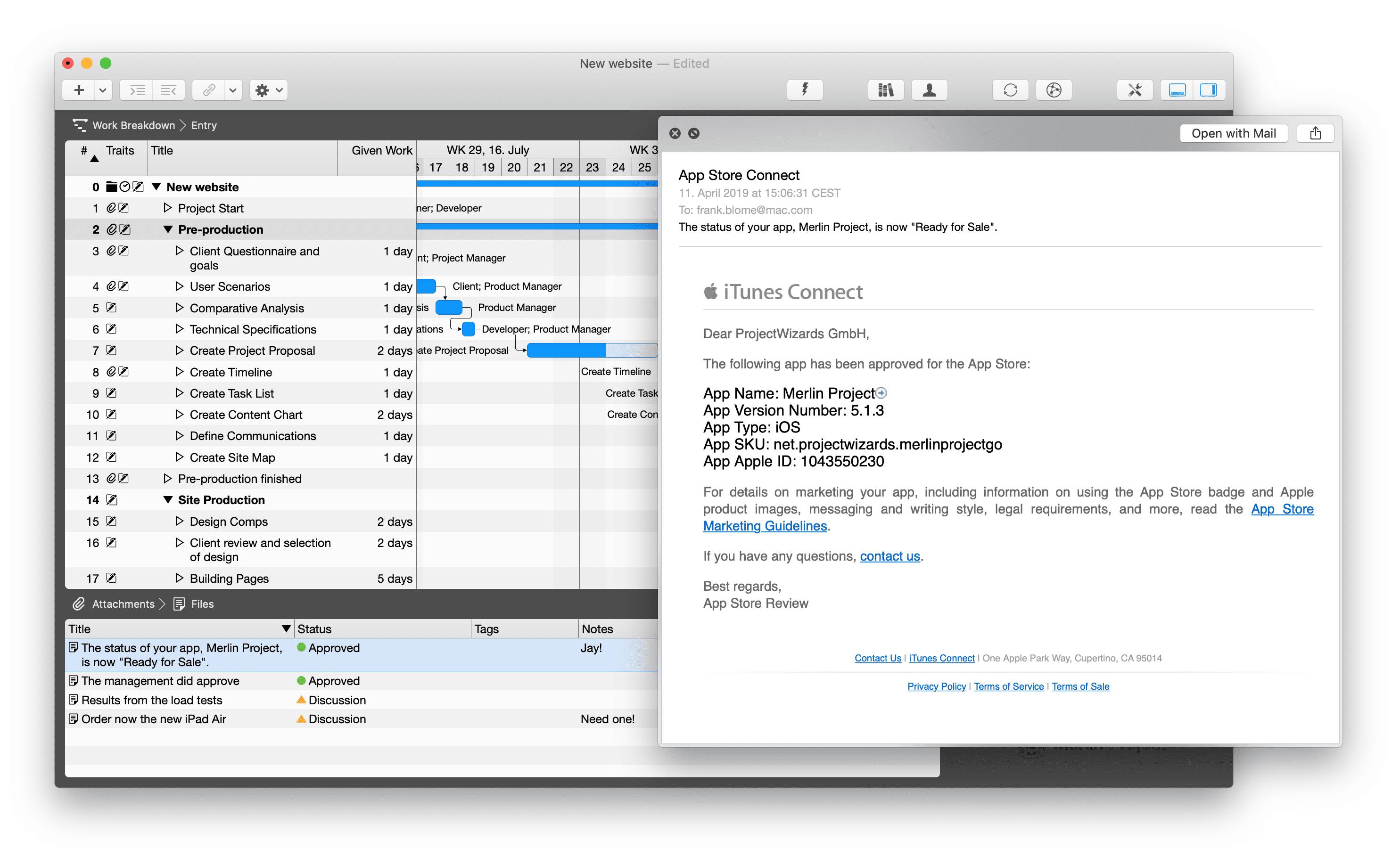Project Management with a Bit of Magic
Plan, manage, and deliver projects efficiently. Merlin Project for macOS and iOS
Yesterday was another one of those days… 250 e-mails in my inbox. Yes, in one day! Of course 75% of it was spam. And even if you use Mail.app's spam filter – which actually works very well – you will always find that a mail slipped into the wrong folder from time to time. This triggered an interesting discussion: Is the e-mail still relevant for the project manager, or have Slack & Co. already taken over all the tasks? But first let me take a closer look at the subject of e-mail.
One of my favorite discussions ;-) When I skim our website, I find at least two versions: eMail and e-Mail. But what is correct? Internationally it is a bit difficult. Here the use of email or e-mail is roughly balanced. As usual, the Duden has a clear opinion for the German-speaking area: E-Mail.
The following list should be a guideline – not only for the project manager – but also for all other professionals:
In my daily routine, e-mails have their place three times:
In the meantime my Mail.app is closed, so that I am not distracted by constant notifications.
Replying to mails is just as regular:
Please always remember: Today, an e-mail can be used as judicial proof.

Of course, Merlin Project also offers perfect support for e-mails. Our strategy is that our software should never be a write or manage program for e-mails. So the good old Drag & Drop was the way to drag mails to the project, a task or a resource. That gives you two important advantages:
If any e-mail is saved in Merlin Project, a preview can be opened with pressing the space bar (think of Quicklook in the Finder). With just one mouse click you can open it in your mail app.

The result was the famous: "That depends" ;-) Our internal discussion is almost exclusively about Slack. Here is the advantage that you can discuss with single or many people in a team without always getting swamped in e-mails.
In the communication with the outside world it is exactly the other way around. Even if a business partner is connected to me via Slack or something, both parties prefer e-mail.
This means that e-mail is still – since 1971 and thus long before the WWW – the most frequently used Internet medium. Thanks, Ray Tomlinson!
Your ideas, our magic – make projects easy! Test now 30 days for free.
